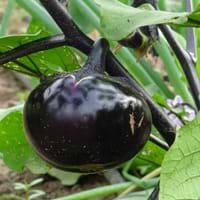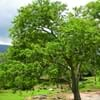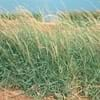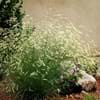Life Span
Perennial
Perennial
Origin
China
Africa, Asia
Types
Not Available
esculentum, depressum, serpentium
Number of Varieties
Not Available
Habitat
Forest margins, gardens, Grassland, Tropical regions
Anthropogenic, Wild
USDA Hardiness Zone
8-15
10-12
AHS Heat Zone
12 - 1
12*1
Sunset Zone
H1, H2, 8, 9, 14, 15, 16, 17, 18, 19, 20, 21, 22, 23, 24
A1, A2, A3, H1, H2, 1a, 1b, 2a, 2b, 3a, 3b, 4, 5, 6, 7, 8, 9, 10, 11, 12, 13, 14, 15, 16, 17, 18, 19, 20, 21, 22, 23, 24
Habit
Clump-Forming
Clump-Forming
Minimum Width
Not Available
Flower Color
Not Available
Lavender
Flower Color Modifier
Bicolor
Bicolor
Fruit Color
Not Available
White, Purple, Plum, Black
Leaf Color in Spring
Light Green, Dark Green
Green
Leaf Color in Summer
Light Green
Green
Leaf Color in Fall
Light Green, Dark Green
Green
Leaf Color in Winter
Light Green, Dark Green
Green
Leaf Shape
Grass like
Broad, Unlobed
Plant Season
Spring, Summer, Fall, Winter
Summer, Fall
Sunlight
Full Sun, Partial Sun, Partial shade
Full Sun
Growth Rate
Fast
Very Fast
Type of Soil
Loam, Sand
Clay, Loam, Sand
The pH of Soil
Acidic, Neutral, Alkaline
Neutral
Soil Drainage
Average
Well drained
Bloom Time
Not Available
Indeterminate
Tolerances
Drought
Drought
Where to Plant?
Ground, Pot
Container, Ground
How to Plant?
Seedlings, Transplanting
Seedlings, Transplanting
Plant Maintenance
Medium
Medium
Watering Requirements
Keep the ground moist but not water-logged, Requires regular watering, Use and maintain water-efficient soaker hoses, Use Mulches to help prevent water loss during hot and windy weather, Water every two or three days during warmer months, Water twice a day in the initial period
Average Water Needs, Keep the ground moist but not water-logged
In Summer
Lots of watering
Average Water
In Spring
Moderate
Moderate
In Winter
Average Water
Average Water
Soil pH
Acidic, Neutral, Alkaline
Neutral
Soil Type
Loam, Sand
Clay, Loam, Sand
Soil Drainage Capacity
Average
Well drained
Sun Exposure
Full Sun, Partial Sun, Partial shade
Full Sun
Pruning
Remove damaged leaves, Remove dead branches, Remove dead leaves
Remove damaged leaves, Remove dead branches, Remove dead leaves
Fertilizers
All-Purpose Liquid Fertilizer
All-Purpose Liquid Fertilizer, Apply 10-10-10 amount
Pests and Diseases
Red blotch
Aphids, Beetles, Blight, Cutworms, Flea Beetles, Leaf spot, Red blotch
Plant Tolerance
Drought
Drought
Flower Petal Number
Single
Single
Fragrant Bark/Stem
No
Yes
Foliage Texture
Medium
Medium
Foliage Sheen
Matte
Matte
Attracts
Birds
Aphids, Beetles, Insects, Not Available
Allergy
no allergic reactions
contact allergic dermatitis, Headache, Itchiness
Aesthetic Uses
Beautification
Not Used For Aesthetic Purpose
Beauty Benefits
Not Available
Skin cleanser
Environmental Uses
Air purification
Air purification
Medicinal Uses
Not Available
Potassium, Rich in Iron, Vitamin C, Vitamin E, Vitamin K
Part of Plant Used
Whole plant
Fruits, Leaves
Other Uses
Culinary use, Used in construction, Used in Furniture, Used in making musical instruments, Used in paper industry
Food for animals, Used as a nutritious food item, Used for its medicinal properties
Used As Indoor Plant
No
Yes
Used As Outdoor Plant
Yes
Yes
Garden Design
Container, Feature Plant, Hedges, Screening / Wind Break, Tropical
Container, Edible, Herb / Vegetable
Botanical Name
BAMBUSA multiplex 'Alphonso-Karrii'
SOLANUM melongena 'Ichiban'
Common Name
Alphonse Karr Bamboo, Clumping Bamboo, Hedge Bamboo
Eggplant, Ichiban Eggplant, Japanese Eggplant
In Hindi
अल्फोंस Karr बांस
बैंगन
In German
Alphonse Karr Bamboo
Aubergine
In French
Alphonse Karr Bamboo
Aubergine
In Spanish
Alphonse Karr Bambú
Berenjena
In Greek
Alphonse Karr Μπαμπού
Μελιτζάνα
In Portuguese
Alphonse Karr Bamboo
Berinjela
In Polish
Alphonse Karr Bamboo
Bakłażan
In Latin
Alphonse Karr Bamboo
Eggplant
Phylum
Not Available
Magnoliophyta
Class
Not Available
Magnoliopsida
Family
Poaceae
Solanaceae
Clade
Angiosperms, Commelinids, Monocots
Angiosperms, Asterids
Subfamily
Bambusoideae
Solanoideae
Number of Species
Not Available
Not Available
Importance of Alphonse Karr Bamboo and Eggplant
Want to have the most appropriate plant for your garden? You might want to know the importance of Alphonse Karr Bamboo and Eggplant. Basically, these two plants vary in many aspects. Compare Alphonse Karr Bamboo and Eggplant as they differ in many characteristics such as their life, care, benefits, facts, etc. Every gardener must at least have the slightest clue about the plants he wants to plant in his garden. Compare their benefits, which differ in many ways like facts and uses. The medicinal use of Alphonse Karr Bamboo is Not Available whereas of Eggplant is Potassium, Rich in Iron, Vitamin C, Vitamin E and Vitamin K. Alphonse Karr Bamboo has beauty benefits as follows: Not Available while Eggplant has beauty benefits as follows: Not Available.
Compare Facts of Alphonse Karr Bamboo vs Eggplant
How to choose the best garden plant for your garden depending upon its facts? Here garden plant comparison will help you to solve this query. Compare the facts of Alphonse Karr Bamboo vs Eggplant and know which one to choose. As garden plants have benefits and other uses, allergy is also a major drawback of plants for some people. Allergic reactions of Alphonse Karr Bamboo are no allergic reactions whereas of Eggplant have contact allergic dermatitis, Headache and Itchiness respectively. Having a fruit bearing plant in your garden can be a plus point of your garden. Alphonse Karr Bamboo has no showy fruits and Eggplant has showy fruits. Also Alphonse Karr Bamboo is not flowering and Eggplant is not flowering . You can compare Alphonse Karr Bamboo and Eggplant facts and facts of other plants too.





